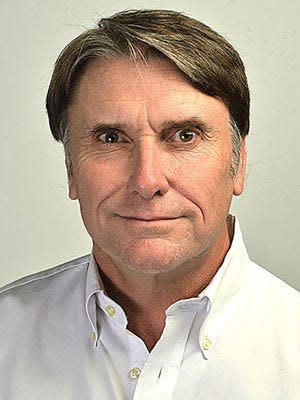What happens when the 401(k) generation's first wave cashes in and a pandemic hits?
The second half of the 20th century saw the birth of the celebrity CEO, and the exorbitant, borderline obscene, wealth that came with the position. Naturally, such largesse is scarcely worth it if you have to pay taxes on it all, so these corporate rock stars looked hard for a solution.
A convenient vehicle was the thick, comprehensive rewrite of the American tax code in 1978. Buried deep down in the weighty document was a provision that permitted executives to escape taxation on bonuses and stock options so long as the proceeds were effectively set aside until they retired.
This allowed executives to basically do with the money what they would have done anyway: Invest it in securities, and watch their fortune grow. Only now it would grow faster still, because it was unencumbered by the headwinds of taxation.

The justification was that employee pension funds had been exempted from taxation in 1926. It really wasn’t the same, but honestly, who was even going to notice? This tiny little tax dodge was buried so deep in the 1978 law — way down in Section 401, Article k — that no one was ever likely to hear of it.
And that probably would have been true were it not for Ted Benna.
An expert on retirement investmenting for a Philadelphia firm, Benna had become disturbed with executives absorbed with looking out for themselves while not caring that their pension plans were going to seed.
Like the fax machine, the era of private pension plans in America was brutally short. American Express, which began life as a delivery service, began offering old-age pensions to employees whose bodies had worn out delivering freight. The movement gained steam during World War II when salaries were frozen and companies relied on benefit plans to attract workers.
Pension systems worked when people had the good manners to die a few years after retirement. But with increasing life spans, they became unsustainable. Today, it’s not unheard of for an employer to pay more out to people who do not work than to people who do.
In sports:After surviving a career-threatening blindside block, Boonsboro's Haga wants a 2nd chance
Benna saw this coming, but he also saw a potential, if shaky, way out. The 1978 tax code’s section 401(k) didn’t specifically say that average employees could defer their incomes tax free. But then, it didn’t specifically say that they couldn’t.
In 1980, Benna’s company called in a favor from the Reagan Administration, and received a favorable ruling from the IRS. At first, no one believed it could be true — that employees could effectively launch a tax-sheltered savings account, while reducing their reported income for tax purposes. And companies could match employee contributions, to boot. A scam, some called it.
Others called it a “voluntary salary reduction plan.” In 1982, the Wall Street Journal wrote, “If the boss suggests that you take a pay cut, don't panic. The company may be offering you the chance at a tax-sheltered savings program that is even better than an Individual Retirement Account.”
Employees, with some degree of trepidation, began to cautiously buy in. For many, if not most, it was their first direct exposure to the stock market, and it wasn’t pretty. Many accounts were just a year or two old when on Black Monday, Oct. 17, 1987, the market suffered the greatest one day plunge in its history. The chaos was repeated in 1990, with the Iraqi invasion of Kuwait. Although they couldn’t have known it at the time, to many Americans these were the two most fortuitous events of their lifetimes.
Those who swallowed hard and stayed the course kept on buying stocks one paycheck at a time when market prices were low. This put them in great position for the boom times of the Clinton years. By then, they had learned to ride out stock market unpleasantness, like the bursting of the dot-com and housing bubbles.
Economists and social commentators have continued to be puzzled by the pandemic-inspired Great Resignation, which has left corporate America critically short of employees. It is true that some of this phenomenon was caused by younger people reassessing their values and choosing simpler, more rewarding lifestyles. But most of the younger people, when the government COVID-relief money ran out, had to face the facts and return to work.
But the pandemic also coincided with the first wave of the 401(k) generation — the ones who bought in early and stayed the course — reaching the magical age of 59 and a half, when they could tap their ample savings penalty free.
There is some irony that most companies abandoned their employee pension plans in favor of 401(k)s to, in part, pay for their multi-million-dollar CEOs. Unfortunately for them, as they beat the bushes for employees who no longer exist, their penny pinching scheme succeeded all too well.
Big claims, big cash: Who’s watching the lottery?
Tim Rowland is a Herald-Mail columnist.
This article originally appeared on The Herald-Mail: Penny pinching to pay CEOs backfires during the Great Resignation
